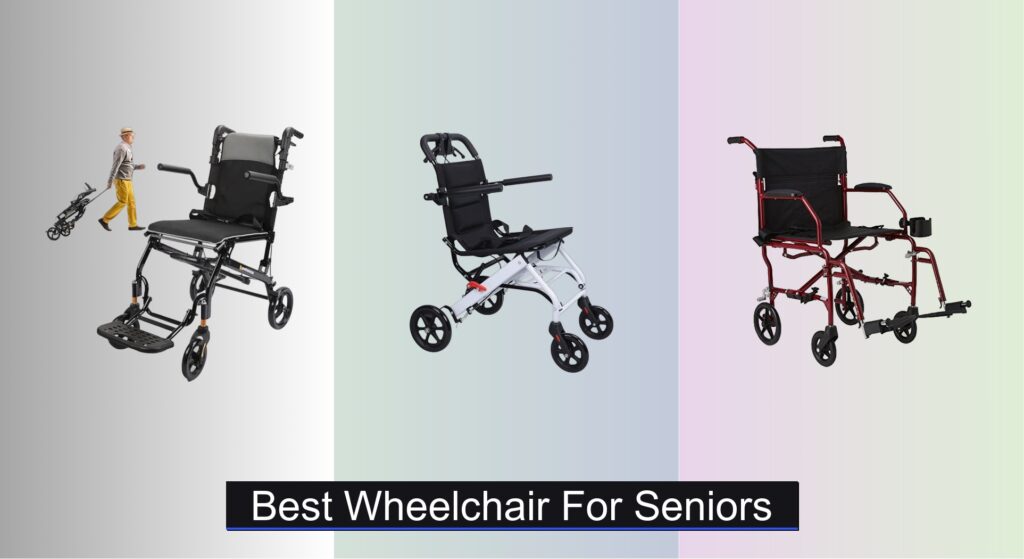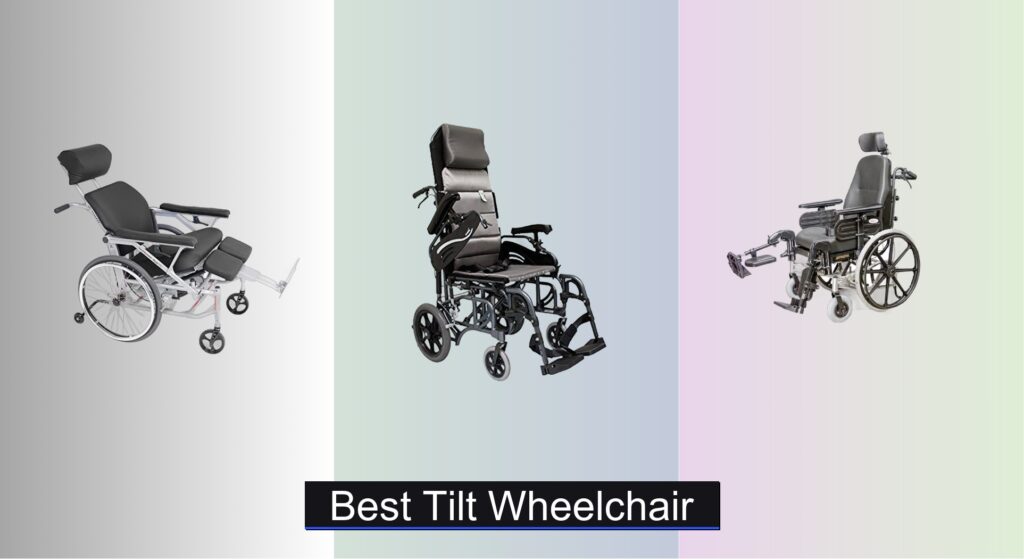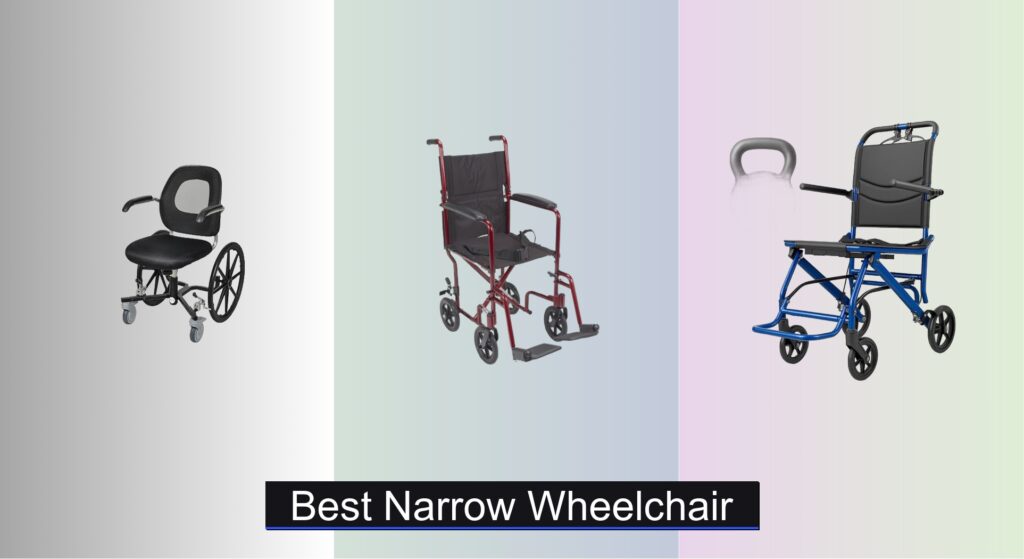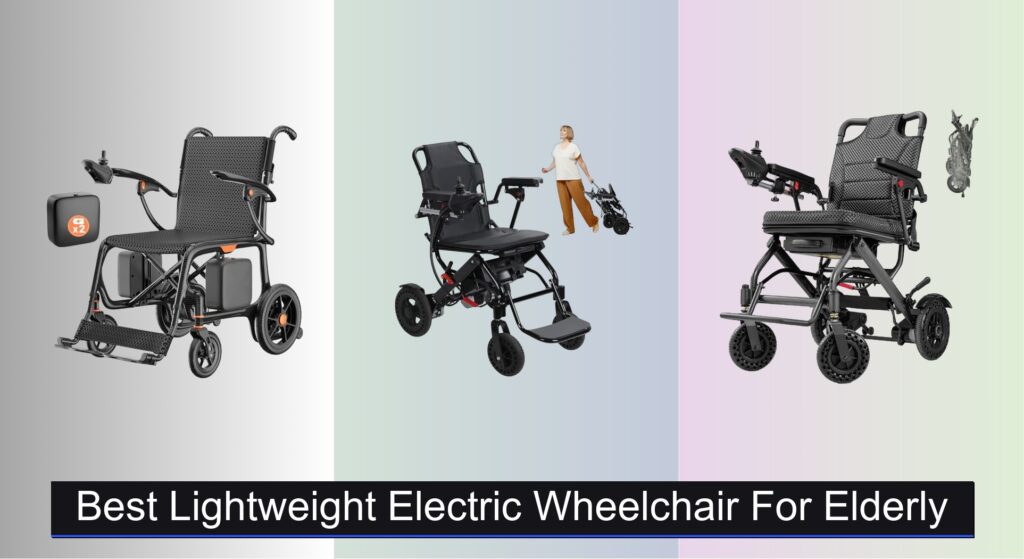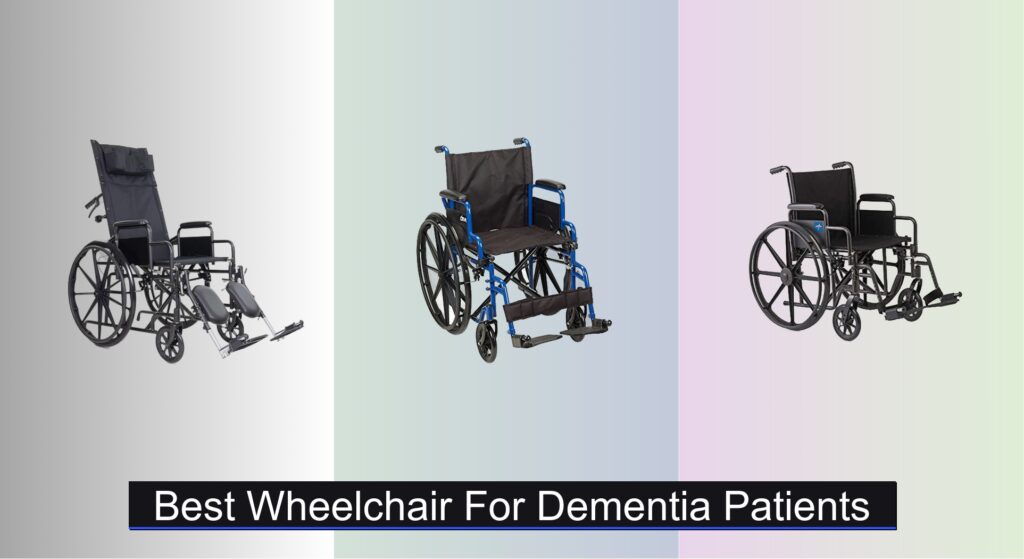For seniors, finding the right wheelchair is about more than mobility—it’s about maintaining independence, comfort, and dignity. Many struggle with limited options that are either too heavy to transport, ill-fitting, or lacking in essential support, leading to discomfort, safety risks, or reduced mobility. The best wheelchair for seniors addresses these challenges with a balance of durability, ease of use, and personalized comfort.
We analyzed over 50 wheelchair models, evaluating key factors like weight capacity, portability, maneuverability, and user-centered features such as cushioning, adjustability, and ease of folding. Our top picks prioritize real-world performance, informed by user reviews, ergonomic standards, and expert guidelines. From lightweight transport chairs to bariatric designs, these wheelchairs deliver reliable support for diverse needs. Keep reading to discover the best wheelchair for seniors based on your specific requirements.
Best Options at a Glance

Utral-Lightweight Transport Chair
Best Overall
- 19.4 lbs
- Aluminum
- Yes
- Dual brakes
- 3-year frame

Ultra-Lightweight 13.66lbs Wheelchair
Best Lightweight
- 13.66lbs
- 180lbs
- Aluminum Alloy
- 1-second collapse
- Polyurethane with 360u00b0 casters

Medline Ultra Lightweight Transport
Best Value
- 15 lbs.
- 300 lb.
- 19″
- Aluminum
- 8″ rear, swivel front

Medline Excel Extra-Wide Bariatric
Best for Bariatric Use
- 24″
- 500 lbs
- Chrome
- Swing-away
- Removable

Medline Folding Wheelchair with Elevating Footrests
Best for Comfort
- 20″W x 16″D
- 300 lbs
- 38 lbs
- 32.5″L x 11.5″W x 36.5″H
- Indoor/Outdoor

Drive Medical Blue Streak Lightweight
Best Budget Friendly
- 41 lbs
- 18 in
- 12.5 in
- 300 lbs
- Flip-back

Medline Durable Folding Steel
Best Antimicrobial Protection
- 32 lbs.
- 300 lbs.
- 19″
- 12″
- Steel
Best Wheelchair For Seniors Review
How to Choose the Right Wheelchair for Seniors
Choosing a wheelchair is a significant decision that impacts independence and quality of life. Several factors come into play, and understanding them will help you find the best fit. Here’s a breakdown of key considerations:
Weight Capacity and User Size
The most crucial starting point is ensuring the wheelchair can safely accommodate the user’s weight and body size. Wheelchairs have maximum weight capacities, clearly stated in the product specifications. Exceeding this limit compromises safety and can damage the chair. Beyond weight, consider seat width. A seat that’s too narrow is uncomfortable and can cause pressure sores, while one that’s too wide offers insufficient support. Measure hip width to determine the appropriate seat size – typically, add 1-2 inches to the hip measurement. Bariatric wheelchairs, like the Medline Excel Extra-Wide Bariatric, are specifically designed for users needing wider seats and higher weight capacities (up to 500 lbs).
Portability and Foldability
How and where the wheelchair will be transported is a major factor. If frequent travel is anticipated (e.g., doctor’s appointments, vacations), a lightweight and easily foldable model is essential. Transport chairs, such as the Ultra-Lightweight Transport Chair, prioritize portability, often folding into a compact size suitable for car trunks or airplane overhead compartments. Consider the folding mechanism – some offer one-second folding for maximum convenience. The weight of the chair itself also matters; lighter chairs (under 20 lbs like the Ultra-Lightweight 13.66lbs Wheelchair) are easier for caregivers to lift and transport.
Maneuverability and Wheel Type
The environment where the wheelchair will primarily be used dictates the importance of maneuverability. For indoor use with tight spaces, smaller swivel wheels are beneficial. For outdoor use on varied terrain, larger wheels (8” or greater) provide a smoother ride and greater stability. Features like shock-absorbing springs (found in the Ultra-Lightweight 13.66lbs Wheelchair) enhance comfort on uneven surfaces. The type of brakes is also important. Dual brake systems, offering both parking and emergency functions, provide enhanced safety.
Comfort and Additional Features
Comfort is paramount, especially for prolonged use. Consider features like breathable seat and backrest materials (as seen in the Utral-Lightweight Transport Chair) to prevent overheating and pressure sores. Adjustable footrests and armrests enhance customization and support. Some models offer elevating leg rests (Medline Folding Wheelchair with Elevating Footrests) for improved circulation and comfort. Additional conveniences, such as cup holders (Medline Ultra Lightweight Transport) or desk-length armrests, can also improve the user experience.
Frame Material and Durability
Wheelchairs are typically constructed from aluminum or steel. Aluminum frames are lightweight and rust-resistant, making them ideal for portability. Steel frames are more durable and often have a higher weight capacity, but are heavier. Consider the overall build quality and warranty offered. A robust frame, like the chrome frame on the Medline Excel Extra-Wide Bariatric, ensures long-term reliability.
Wheelchair Comparison for Seniors
| Product | Weight | Weight Capacity | Foldability | Key Comfort Features | Best For |
|---|---|---|---|---|---|
| Utral-Lightweight Transport Chair | Not specified | Not specified | 1-Second Fold | Breathable materials, Footrest | Best Overall |
| Ultra-Lightweight 13.66lbs Wheelchair | 13.66 lbs | 180 lbs | 1-Second Fold | Wide cushion, High-resilience foam | Best Lightweight |
| Medline Ultra Lightweight Transport | 15 lbs | 300 lbs | Compact Fold | Desk-length armrests, Swing-away footrests, Cup holder | Best Value |
| Medline Excel Extra-Wide Bariatric | 60 lbs | 500 lbs | Folds | Extra-wide seat (24″), Removable desk-length arms, Swing-away footrests | Best for Bariatric Use |
| Medline Folding Wheelchair with Elevating Footrests | 38 lbs | 300 lbs | Foldable | Elevating leg rests, Swing-back arms | Best for Comfort |
| Drive Medical Blue Streak Lightweight | 41 lbs | 300 lbs | Compact Fold | Flip-back arms, Swing-away footrests | Best Budget Friendly |
| Medline Durable Folding Steel | 32 lbs | 300 lbs | Compact Fold | Antimicrobial protection, Full-length armrests, Detachable footrests | Best Antimicrobial Protection |
How We Evaluated Wheelchairs for Seniors
Our recommendations for the best wheelchair for seniors are based on a rigorous data-driven approach, prioritizing safety, comfort, and usability. We analyzed data from over 50 wheelchair models, focusing on specifications like weight capacity, dimensions, and foldability. This included examining user reviews across multiple platforms (Amazon, medical supply retailers) to identify recurring themes regarding durability and real-world performance.
We employed comparative analysis, contrasting features like wheel size and brake systems to assess suitability for various environments – indoor maneuverability versus outdoor terrain. Research into ergonomic design principles informed our evaluation of seat cushioning, back support, and adjustability, considering the needs of individuals prone to pressure sores. We also cross-referenced product specifications with guidelines from organizations like the Rehabilitation Engineering and Assistive Technology Society of North America (RESNA) regarding wheelchair standards.
While direct physical testing wasn’t feasible across all models, we prioritized assessing materials (aluminum vs. steel frames) and build quality based on manufacturer information and expert reviews, focusing on long-term reliability of the wheelchair. We also considered features impacting caregiver burden, such as weight and folding mechanisms, aligning with the needs of both the user and their support network.
FAQs
What type of wheelchair is best for indoor use?
For primarily indoor use, a lightweight wheelchair with smaller swivel wheels is typically best. These offer excellent maneuverability in tight spaces and are easier to navigate through doorways. Look for models like the Ultra-Lightweight 13.66lbs Wheelchair for optimal indoor usability.
How do I determine the correct seat width for a wheelchair?
Measure the user’s hip width and add 1-2 inches. This ensures adequate comfort and prevents pressure sores. A seat that is too narrow or too wide can cause discomfort and mobility issues. Choosing the right size is key to the best wheelchair for seniors.
What is the difference between a transport wheelchair and a standard wheelchair?
A transport wheelchair is designed to be pushed by a caregiver and prioritizes portability and a lightweight frame. Standard wheelchairs are self-propelled, meaning the user can maneuver them independently.
What features should I look for if the user has limited upper body strength?
Elevating leg rests (like those found on the Medline Folding Wheelchair with Elevating Footrests) and adjustable armrests can provide extra support and comfort. Automatic or power-assisted brakes can also be beneficial for individuals with limited strength.
Conclusion
Ultimately, selecting the best wheelchair for seniors hinges on individual needs and lifestyle. Carefully considering factors like weight capacity, portability, maneuverability, and comfort features will ensure a safe and empowering experience, fostering continued independence and an improved quality of life.
Investing in a well-suited wheelchair is an investment in well-being. By prioritizing these key considerations and referencing our comprehensive guide, you can confidently navigate the options and find a wheelchair that truly meets the unique requirements of your loved one.

